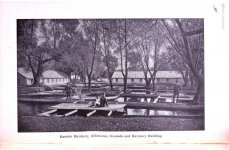M
Mike
Well-known member
- Joined
- Nov 10, 2006
- Messages
- 5,433
The statewide stockings of Brook Trout in the late 1800's, etc have been mentioned here in the past, but no numbers have been presented. A total of 30,825,303 fry were reported to have been shipped in milk cans, 1000-1500 fry per can, from the western ( Corry ) and eastern (Allentown) hatcheries in the years cited above.Distribution was very widespread via rail to the voluntary stocking applicants, most of whom appeared to be from fish and game protective associations. Those individuals then met the trains and stocked via horse and wagon. Using 1902 as an example, about 55 counties received fish during that spring. Springs/spring runs were sought in the east for stocking while a lack or absence of such stocking points was considered to be problematic in the west where more typical streams were directly stocked.





